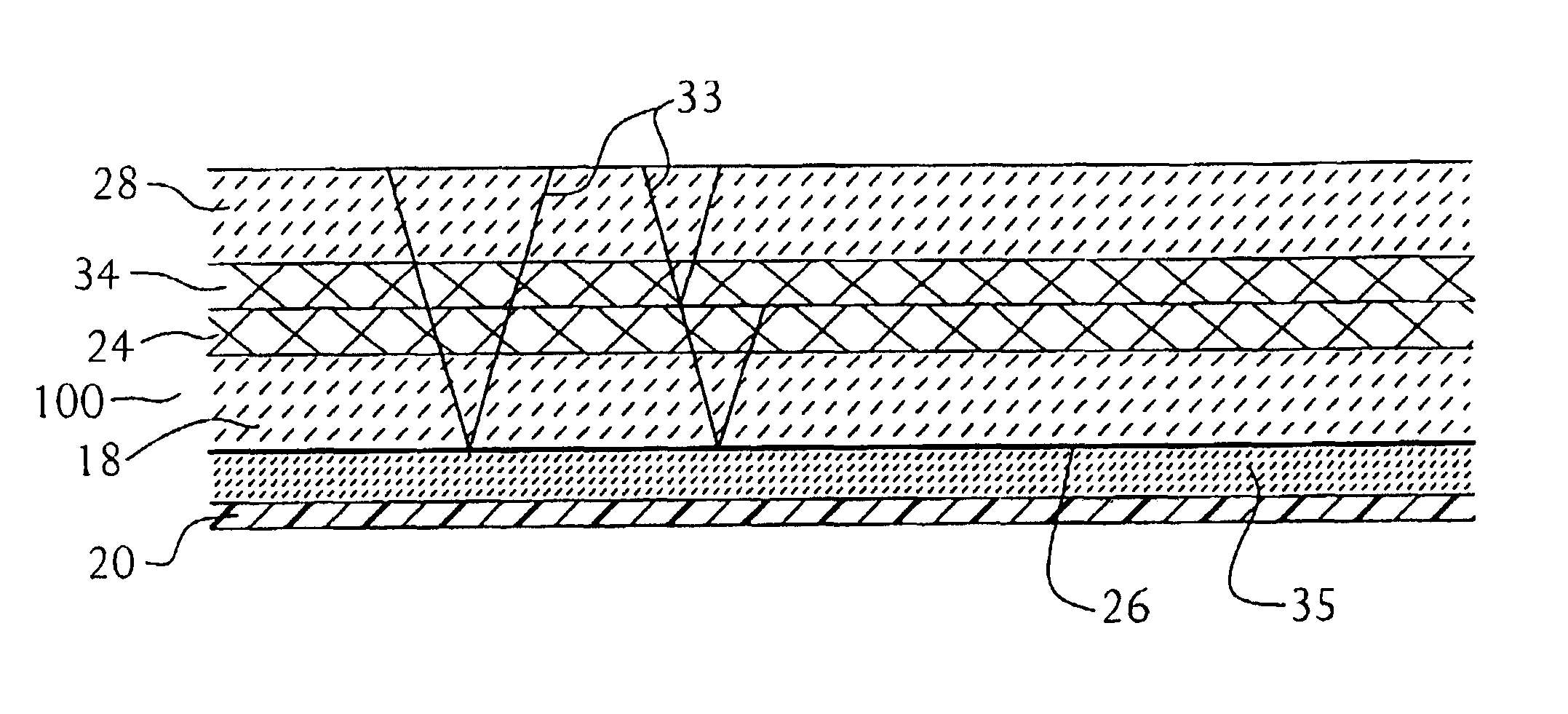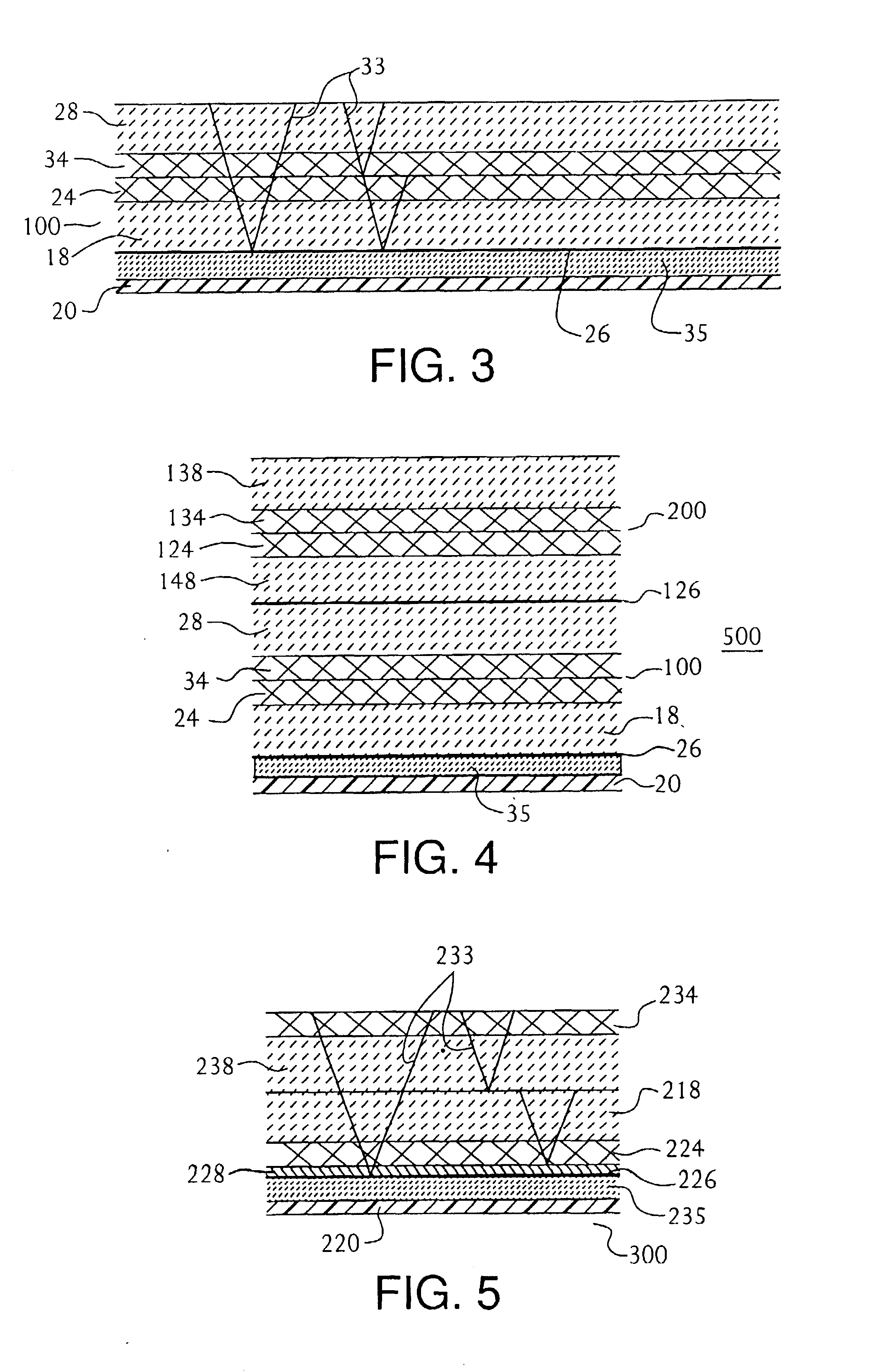Inversion liner and liner components for conduits
a conduit and inversion liner technology, applied in the direction of flexible pipes, pipe elements, mechanical equipment, etc., can solve the problems of less optimized tensile strength, high cost of underground pipe replacement, and often cracks or weakened areas of pipes that need repair, so as to achieve higher modulus and strength, the effect of reducing the thickness of the liner wall
- Summary
- Abstract
- Description
- Claims
- Application Information
AI Technical Summary
Benefits of technology
Problems solved by technology
Method used
Image
Examples
Embodiment Construction
[0025]The present invention is related to inversion liners of the type that can be inverted with the assistance of fluid pressure, such as compressed air, steam or hot water (hereinafter “fluids”) to expand within a defective conduit and generally, mechanically mate or bond within, or come in close proximity to, the inner diameter of the conduit prior to curing to form a substantially corrosion and water resistant sleeve. As such, the liners of this invention are thin, tubular members which can exhibit a tubular, tape-like or ribbon-like cross-section prior to inversion. As used herein, the term “buildable” refers to the ability of the liners of this invention to be adhesively bonded to a second or subsequent liner to build up the thickness of the liner to its final thickness, and the term “glass-faced” means a liner having at least one glass layer located on, or proximate to, its face or faces. Building techniques for liner materials are often useful for large pipes of 36-40 inches...
PUM
 Login to View More
Login to View More Abstract
Description
Claims
Application Information
 Login to View More
Login to View More - R&D
- Intellectual Property
- Life Sciences
- Materials
- Tech Scout
- Unparalleled Data Quality
- Higher Quality Content
- 60% Fewer Hallucinations
Browse by: Latest US Patents, China's latest patents, Technical Efficacy Thesaurus, Application Domain, Technology Topic, Popular Technical Reports.
© 2025 PatSnap. All rights reserved.Legal|Privacy policy|Modern Slavery Act Transparency Statement|Sitemap|About US| Contact US: help@patsnap.com



